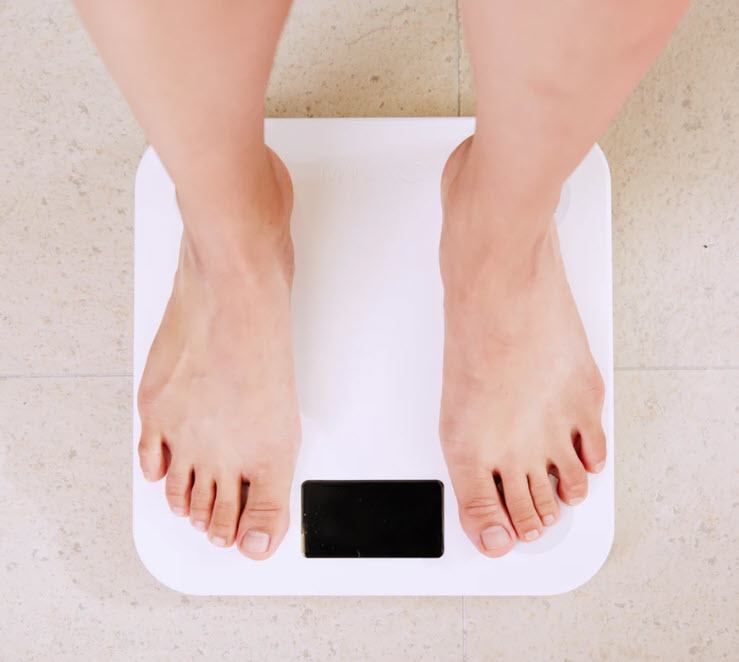- You are here:
- Home »
- Blog »
- Natural Solutions »
- Tackling Obesity Begins with Awareness and Ends with Action
Tackling Obesity Begins with Awareness and Ends with Action

Obesity, classified as a disease by the American Medical Association in 2013, is one of the most prevalent threats to our health that plague our modern cultures.
Being obese, in plain and simple terms, means having too much body fat. Excessive body fat can interfere with daily functioning, and be detrimental enough to shorten life expectancy by as much as ten years or more.
Obesity puts people at risk for a lot of different health conditions. Some of these include heart disease, high blood pressure, diabetes, certain cancers, high cholesterol, and sleep apnea, to name a few.
Obesity must be taken more seriously than merely passing it off as having put on a few extra pounds and some love handles. Unchallenged obesity leads to grossly overweight conditions. This developing weight gain makes your health risks all the more significant as your weight gain grows.
Those who are obese have generally struggled with issues related to weight loss for significant amounts of time. Many were even overweight from childhood.
Obesity in the U.S.
Obesity numbers in the US have reached a catastrophic state. More than 2 in 3 adults (70.2 percent) are considered to be overweight or obese. Of those. 7.7% are considered morbidly obese with a BMI (Body Mass Index) of 40 or more.
Young people are also afflicted with this preventable condition. One in five of the population under 20 years old are classified as obese today. 30.4% of low-income preschoolers are obese, and ¼ of all 2 to 5-year-old kids are either obese or overweight.
44% of diabetes cases are related to obesity. 18% of all deaths in the US stem from obesity-related conditions.
Unfortunately, many people have no idea they are obese or, even worse, are obese and in complete denial. Worse yet, they are obese and have given up any hope of ever losing weight.
Determining Obesity
To determine if you are obese, look at a body mass index (BMI) scale and locate your rating.
BMI is a combination of your weight and height. If the number is 30 or higher, you are considered obese. A BMI of over 40 on the chart falls into the category of morbid obesity.
If you carry the bulk of your body fat in the stomach, this points to an increased risk of health problems. This is called visceral fat.
Visceral fat is considered the most dangerous because it surrounds and may accumulate inside the arteries and vital organs such as the liver, heart, intestines, and pancreas.
A woman whose waist size is 35 inches or more points to an increased possibility of disease. A man with a waist size of 40 inches or more is considered to have an increased disease risk as well.
Warning signs to pay attention to are shortness of breath and/or pain and discomfort when you move around doing normal activities.
Causes of Obesity
The causes of obesity are products of the daily choices we make. The most common choice is eating more calories than you burn. Taking in more calories than you burn will generate weight gain.
Also to be considered is the quality of those calories. If your caloric intake is largely from processed foods with empty calories and plenty of sugar your chances of being overweight are much higher than not.
The same calories from whole, natural or organic foods will produce a markedly healthier effect, including less weight.
This points to step one in any weight loss plan- improve the quality of your food intake emphasizing whole over processed foods. See the tips below for a bit more on this issue.
Sedentary Calories

With a society that is becoming more and more sedentary, this common choice of consuming more calories than you burn has become a bigger liability than ever. However, overeating is not the only behavior that can lead to obesity.
There are other factors that most people don’t typically consider.
Family Influences
One of those factors is a history of obesity in your family. The sad reality is that if you have parents who are obese, you are more likely to be obese as well.
Environmental influences dictate that we learn about our eating habits from our families. If your parents ate an unhealthy diet, the chances are high that you will repeat their choices and do the same. An apparent warning sign of this cause is your overweight parents.
Busy, Busy
Another factor that can lead to obesity is a busy lifestyle. Many people today have a million and one different things to do. They often don’t have time to prepare healthy meals.
Instead, many of us head to the nearest drive-thru or fast-food restaurant. As we all know, these foods are full of saturated fats and contain more calories than any one person needs to eat in a single meal. Weight gain is the result of the habitual use of this poor choice.
Five Tips for Assaulting Obesity
As pointed out, obesity is a common health risk in our culture. As a response, Doctors have developed innovative ways to address obesity. However, a healthy diet and exercise remain the best way to reach the desired weight and keep it there for life.
Even losing only 5% to 10% of your weight can have a healthy impact on blood pressure, blood sugar, and cholesterol levels. So, don’t get discouraged if you have more excess than you think you can eliminate.
- In the case of a busy lifestyle, planning meals in advance will work well. Plan and then make your meals at home on Sunday for the rest of your workweek. Freeze them until you are ready to eat. A plan-ahead strategy like this will make it easier for you to eat healthfully during the week.
- Opt for real, whole foods over processed snacks such as crackers, chips, and sugary beverages (including allegedly healthy fruit juices). Whole, natural or organic, foods ensure that you getting plenty of vitamins, minerals, fiber, and other nutrients.
Emphasizing healthy protein over carbohydrates, particularly at the beginning of your weight loss plan, helps to eliminate excess. You can relax that emphasis later on after you reach a maintenance level, but it is not advisable to return to former levels or you will be back at square one sooner rather than later. - Pack healthy snacks to take with you. Keep the whole foods suggestion in mind. If you get hungry, while you are away from home, rather than succumb to poor food selections, you will have something healthy to eat on hand. (Clean eating snack suggestions.)
Suggestions include foods like cut organic carrots and celery with a chickpea dip you have made. Nuts, seeds and organic raisins you have selected roasted with a little fine ground sea salt or tamari (soy sauce) blended in for taste both satisfies your craving for food and adds healthy protein to your diet helping with weight loss. - Many weight-loss experts advocate eating every 3 hours during the day as many bodybuilders do. Healthy lean proteins, carbs, and grains, like brown rice, eaten every 3 hours help to regulate blood sugar, control cravings, and result in reducing overeating.
This method also helps to keep your metabolism at its highest. The meals should be small. Typically, when one eats this way, they consume a lot less food than those who eat three big meals per day. - Exercise is also essential for weight loss. Obese people have often slowed their metabolisms to a crawl from years of a sedentary lifestyle. Cardio workouts will stimulate the metabolism and facilitate the burning of more calories daily. Exercise is a vital part of not only losing weight but keeping it off.
Even the adoption of a regular walking program will be helpful. Three to four times a week can be the difference between losing it and keeping it off and losing it only to find yourself back to where you began.
Obesity is addressable if you have the will to do so. Begin with these tips and keep moving forward. You will eventually reach your target weight if you don’t return to the poor choices that added those pounds in the first place.
Related Posts
Free Survival Nutrition Course – 8 Hours Plus PDF
5 Reasons to Cut Back on Animal Foods
Protein – Which Is Better for Your Health – Animal or Vegetable?
Wall Street Journal Investigation Finds Dumpster Trash Food and Supplements Being Sold as New
Think Junk Food Can’t Lead to Health Issues? UK: Teenager Goes Blind After a Limited Diet of French Fries, Pringles, White Bread, Ham and Sausage
Time to Break Your Sugar Habit?
Bayer May Be Regretting Its Purchase of Monsanto As Glyphosate Cases Line Up
Duke University’s World Food Policy Center – Podcasts and More

